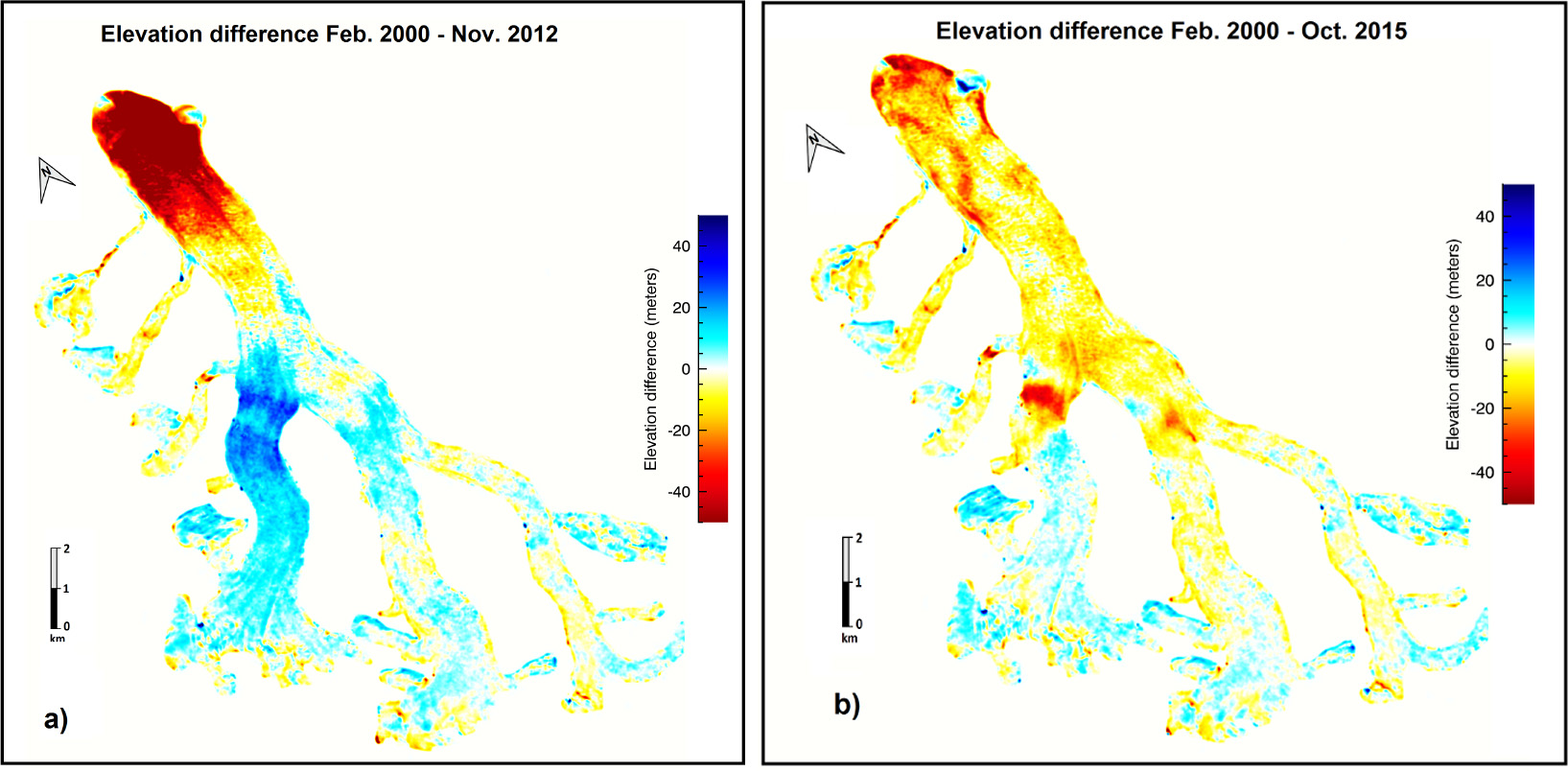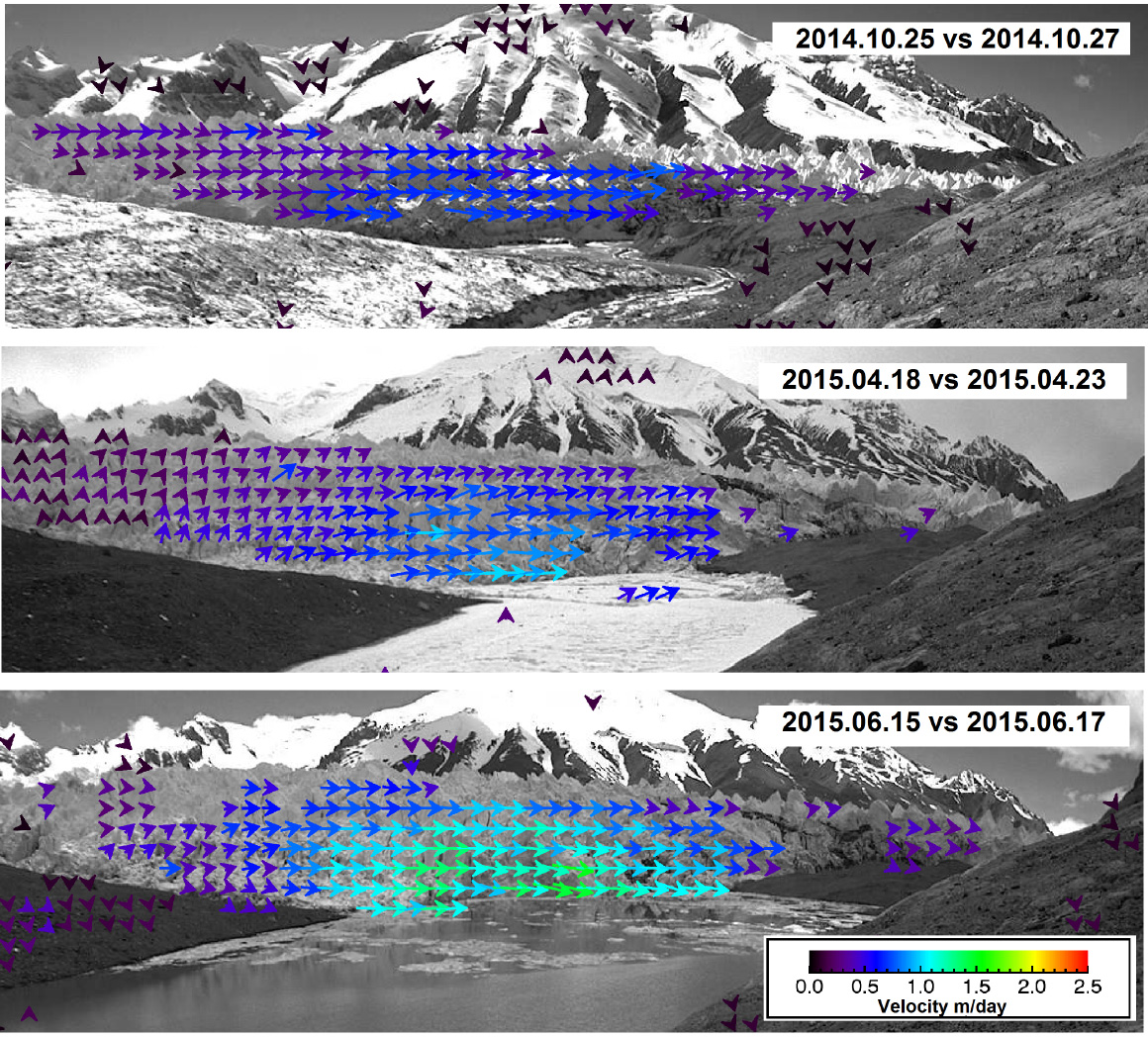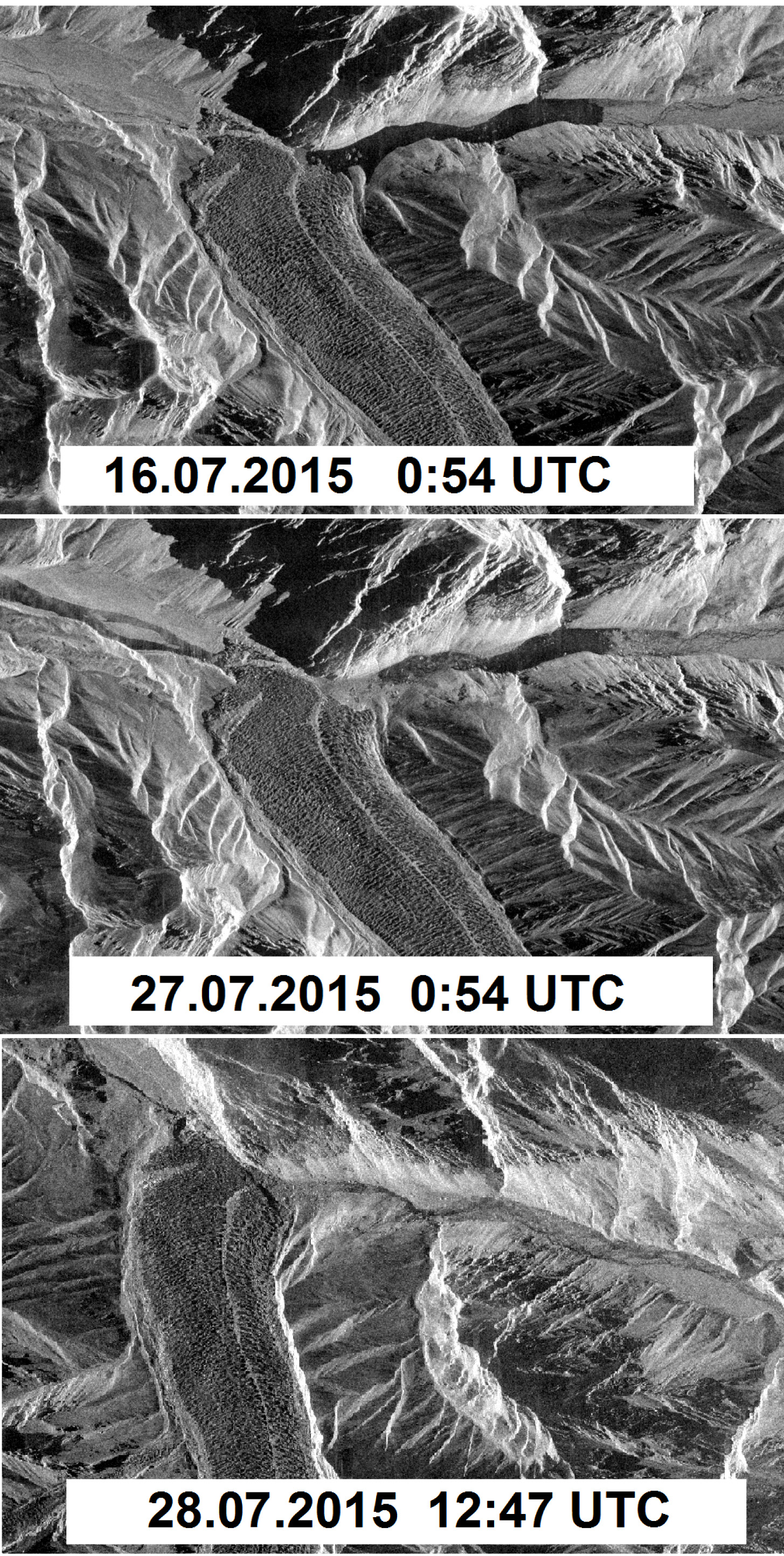Glacier surge and lake outburst observed by TanDEM-X, Sentinel 1A and LandSat 8.
An entire cycle of the periodic instability forming a surging glacier could be observed by TanDEM-X, Sentinel-1A and LandSat 8 satellite data in an excellent interdisciplinary work of Vanessa Round.
Kyagar Glacier blocks the riverbed of the Upper Shaksgam Valley, Karakorum, and occasionally triggers the formation of an ice-dammed lake, causing destructive floods. A sudden increase of the glacier velocity (glacier surge) caused dramatic ice thickening which was measured by TanDEM-X to exceed 100 meters at the terminus. The glacier thickening initiated the formation of a lake, which exceeded 45 million m3 before draining in less than one day at the end of July 2015. Precursors of the lake-drainage could be identified in Sentinel 1A data and local population could successfully be warned.
The excellent Master Thesis of Vanessa Round formed an integrative picture of the ice-dynamics which drive the periodic instability of the glacier and allows forecasting future flood events.



